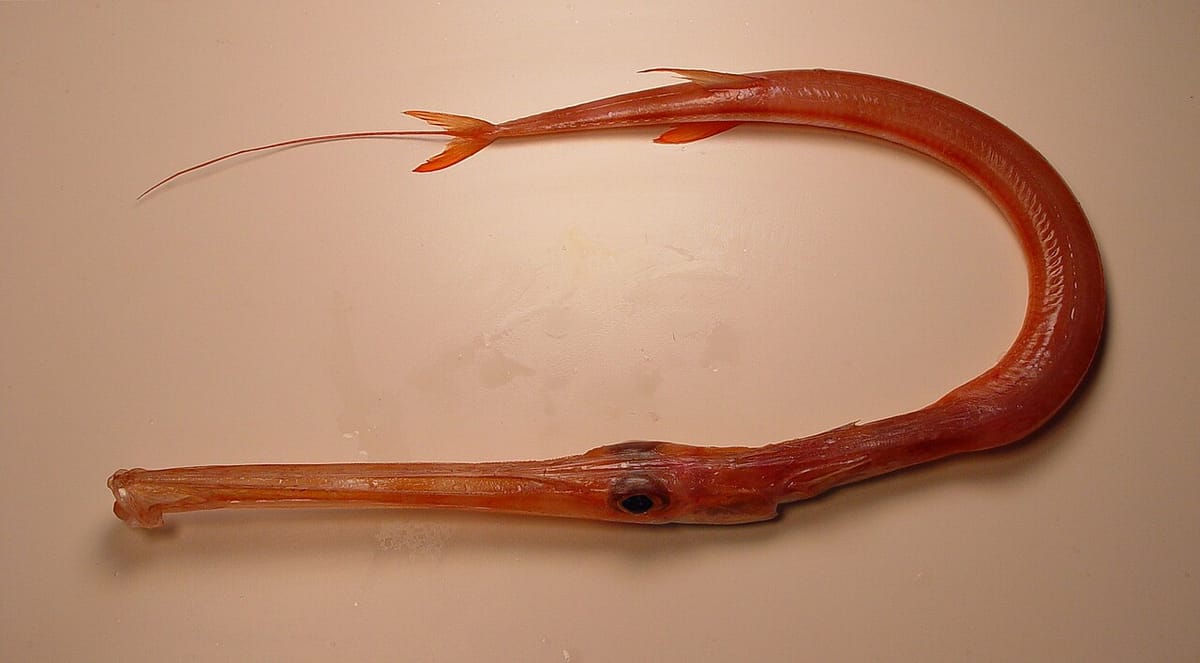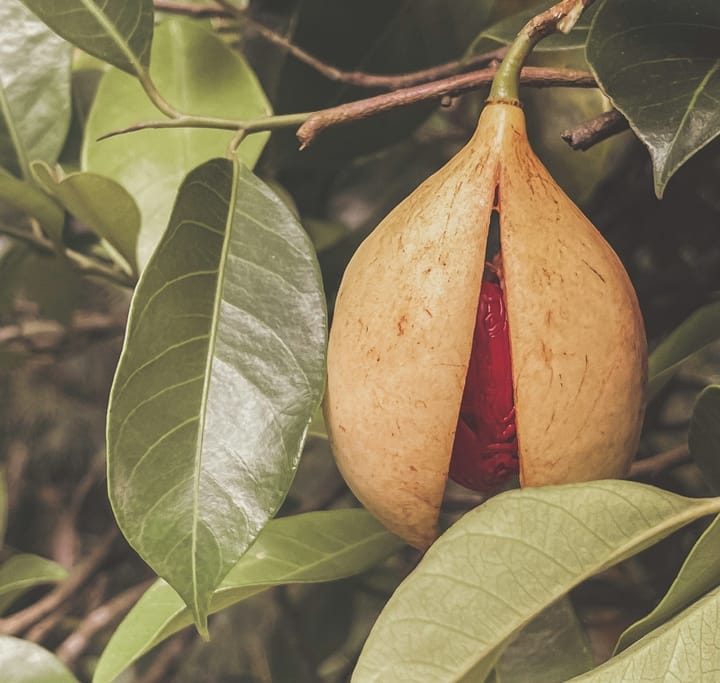Akayagara (Red Cornetfish): Japan's Exclusive Summer Delicacy
Discover Akayagara, Japan's elusive summer treasure. This needle-shaped fish commands premium prices for its unique mochi-mochi texture and umami-rich flavor coveted by top chefs

In the world of luxury seafood, where bluefin tuna and wild fugu often steal the spotlight, there exists a lesser-known treasure that discerning Japanese chefs eagerly await each summer.
The Akayagara, or red cornetfish (Fistularia petimba), represents one of those rare culinary gems that combines exclusivity, exceptional flavor, and cultural significance into a single, elongated package that can stretch over five feet in length.
Why This Strange-Looking Fish Captivates Japan's Top Chefs
At first glance, the Akayagara might seem like nature's joke—a fish that appears to have been stretched like taffy, with an impossibly thin body culminating in a whip-like tail filament.
Yet this peculiar appearance belies its status as one of summer's most coveted catches in Japanese haute cuisine.
The name "Akayagara" literally translates to "red spear shaft," a fitting description for this crimson-hued predator that glides through warm Pacific waters like an underwater javelin.
What makes the Akayagara particularly intriguing to luxury food enthusiasts is its scarcity combined with its remarkable culinary properties.
Unlike many premium fish that are available year-round through aquaculture, Akayagara remains exclusively wild-caught, with peak season running from June through August when the waters around Japan warm to their optimal temperatures.
The Numbers Behind This Rare Catch
In Tokyo's Tsukiji Outer Market and the newer Toyosu Market, a single Akayagara can command prices ranging from $80 to $200 per fish, depending on size and condition.
When you consider that the edible portion constitutes only about 30% of the fish's body weight due to its unique anatomy, the per-pound price rivals that of premium wagyu beef or winter truffles.
High-end kaiseki restaurants in Kyoto and Tokyo may charge upwards of $50 for a single serving of Akayagara sashimi—a price point that places it firmly in the luxury ingredient category.
The economics of Akayagara are driven by several factors that appeal to the luxury food market.
First, these fish are notoriously difficult to catch in commercial quantities. Their preference for coral reefs and rocky outcroppings makes large-scale net fishing impossible, meaning most Akayagara are caught by individual fishermen using traditional line-fishing methods.
Second, their fragile bodies require exceptional handling to maintain quality, as the delicate flesh can easily be damaged during transport.
What Makes Akayagara Worth the Premium Price
The true value of Akayagara reveals itself on the plate. The flesh, when properly prepared, offers a unique textural experience that sets it apart from other premium white fish.
It possesses a firm yet tender consistency that Japanese chefs describe as "mochi-mochi"—a bouncy, slightly chewy texture that's highly prized in Japanese cuisine.
The flavor profile is subtle yet complex, with a natural sweetness and umami depth that intensifies during the summer months when the fish feeds actively on small crustaceans and fish.
For many Japanese chefs, Akayagara represents more than just taste—it captures the essence of summer in each bite
The texture changes as you chew, releasing layers of flavor that remind you of warm ocean currents and coral reefs.
From Traditional to Modern: How It's Served
In traditional Japanese cuisine, Akayagara is most commonly served as sashimi or nigiri sushi, where its delicate flavor can be fully appreciated.
The preparation requires considerable skill, as the unusual bone structure demands precise knife work to extract the prime portions of flesh.
Expert chefs use a technique called "sogi-zukuri," creating paper-thin slices that showcase the fish's translucent quality when held to light.
Beyond raw preparations, Akayagara excels in several cooking methods that highlight its versatility:
Shioyaki (Salt-Grilled): The entire fish, despite its length, is sometimes grilled over charcoal with just a touch of sea salt. This method concentrates the flavors and creates a crispy skin that contrasts beautifully with the moist interior.
Suimono (Clear Soup): The bones and head of Akayagara produce an exceptionally clear and flavorful dashi that forms the base for elegant summer soups, often garnished with seasonal vegetables and herbs.
Tempura: Thin strips of Akayagara wrapped in shiso leaves and lightly battered create a tempura variation that's become increasingly popular in high-end tempura specialty restaurants.
Modern Japanese chefs have begun experimenting with fusion preparations, including Akayagara carpaccio dressed with yuzu-infused olive oil and microgreens, or lightly smoked versions that intensify the fish's natural sweetness while adding complexity.
Timing Is Everything: When and How to Choose
For culinary professionals and serious food enthusiasts looking to experience Akayagara at its peak, understanding selection criteria is crucial.
The finest specimens exhibit a vibrant reddish-pink hue along their bodies, with clear, bright eyes and firm flesh that springs back when gently pressed.
Size matters in the world of Akayagara—larger fish, typically those exceeding four feet in length, are more highly prized as they tend to have better fat distribution and more developed flavor.
The summer seasonality of Akayagara is deeply rooted in the fish's biology. As water temperatures rise, these predators become more active, feeding voraciously on small fish and crustaceans.
This increased activity leads to optimal fat content and muscle development, creating the ideal eating quality that chefs seek.
Japanese culinary tradition holds that eating Akayagara during the hottest days of summer provides a cooling effect on the body—a belief that adds to its cultural significance as a seasonal delicacy.
The Secret Science of Its Incredible Taste
The exceptional taste of Akayagara isn't merely a matter of rarity—it's rooted in fascinating biology.
The fish's elongated body structure creates a unique muscle composition unlike any other commercial fish.
The long, streamlined form requires specialized muscle fibers that contract in wave-like patterns, allowing the fish to dart through coral formations with remarkable agility.
These specialized muscles develop a distinctive grain pattern that contributes to the prized "mochi-mochi" texture.
Marine biologists have discovered that Akayagara possesses an unusually high concentration of inosinic acid, a naturally occurring compound that serves as one of the fundamental building blocks of umami.
This concentration peaks during summer months when the fish's metabolism accelerates, explaining why seasonal timing is so crucial for optimal flavor.
The fish's diet of small crustaceans and reef fish also contributes unique flavor compounds, particularly glycine and alanine, which impart the characteristic sweetness that distinguishes Akayagara from other white-fleshed fish.
More Than Food: The Cultural Story
In certain regions of Japan, particularly in Shizuoka and Wakayama prefectures, Akayagara holds ceremonial importance beyond its culinary value.
The fish's spear-like appearance has long associated it with protection and precision in Japanese folklore.
During the Edo period, samurai families would present Akayagara at summer gatherings as a symbol of strategic thinking and swift action—qualities embodied by the fish's hunting style.
Today, some traditional ryokan (Japanese inns) maintain the custom of serving Akayagara during the Tanabata festival in July, when its consumption is believed to bring clarity of purpose for the year ahead.
High-end kaiseki restaurants have elevated this tradition, creating elaborate presentations where the fish's full length is displayed before preparation, allowing diners to appreciate its remarkable form.
One renowned Kyoto establishment presents Akayagara on a custom-made five-foot lacquered plate, garnished with seasonal flowers and served alongside handwritten calligraphy describing the fish's journey from ocean to table.
Is This Summer Treasure Worth Your Investment?
While the price point of Akayagara places it firmly in luxury territory, connoisseurs argue that the experience justifies the cost.
Like sampling a perfectly aged Château Pétrus or savoring winter white truffles at their peak, enjoying Akayagara represents an investment in a fleeting, seasonal experience that connects diners to centuries of Japanese culinary tradition.
As global interest in authentic, regional delicacies continues to grow, Akayagara stands poised to gain recognition beyond Japan's borders.
Its combination of rarity, exceptional quality, and deep cultural significance makes it a perfect ambassador for luxury ingredients that define haute cuisine.
For those who seek the exceptional in their culinary adventures, this elegant summer delicacy rewards the patient with an unforgettable taste of Japanese summer.


